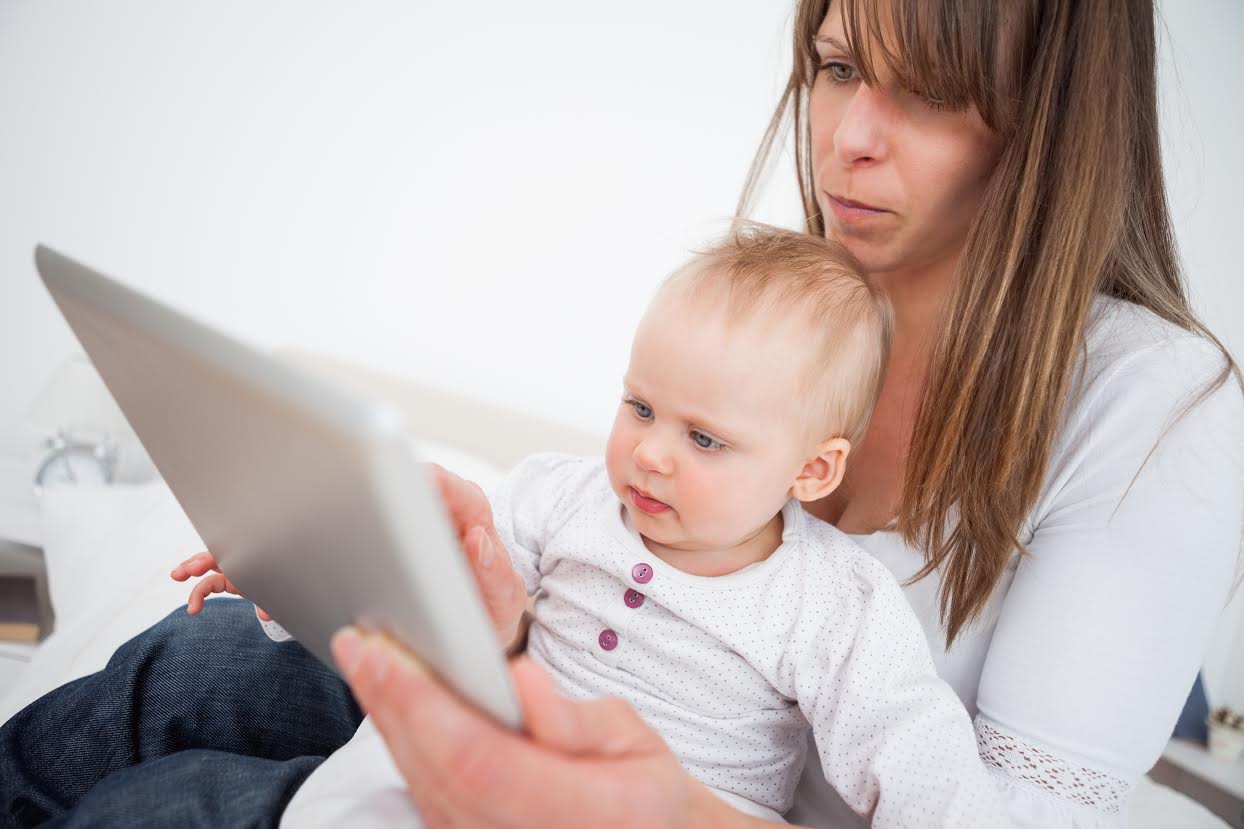A remarkable thing happened last week in the world of children’s media. One of the strongest voices against “screen time” for children under two – an author of the American Academy of Pediatrics’ policy statement on babies and toddlers and media – changed his mind.
Dr. Dmitri Christakis of the University of Washington published a commentary in JAMA Pediatrics, saying he’d concluded that “while many of you wait for us to build an evidence base before this technology too is supplanted by some new one, I believe that judicious use of interactive media is acceptable for children younger than the age of 2 years.”
Christakis acknowledged at the outset of the piece that his reversal is based on intuition and inference, not data. “We still know surprisingly little about how iPads and other interactive media technologies affect children’s cognition,” he wrote. “Research is simply unable to keep up with the pace of technological advances—and these devices are increasingly popular.”
Predictably, Christakis received “blowback” almost immediately. In a Huffington Post column, Susan Linn of the Campaign for a Commercial Free Childhood bemoaned, “the acknowledged lack of supporting research” backing up his new view, and worried that “babies could be harmed if his hunch leads more parents to encourage an hour a day of touch-screen time for their youngest, most vulnerable children.”
Of course, if there is no research then both views are built on gut feelings; there is no “science.” It could be years before we have substantive research into the influence of mobile touchscreen media on children’s early development. We may never be certain: even after decades of television, most findings about the impact of TV viewing in the early years are correlational, without proven causal links. Children and families live in a complex world, not a controlled laboratory, making it nearly impossible to reach a one-size-fits-all definitive “right” or “wrong” about very young children and screen media.
In the absence of research, what’s the best path for parents to follow? Linn and Christakis rightly agree that, first and foremost, babies and toddlers need hands-on tactile play and social contact with caring adults.
But Linn asks of media play, “is it better for babies to apply the precautionary principle and hold off for a couple of years or until we know more? Will babies suffer if their introduction to touch screens is postponed a few years?” Christakis counters that carefully chosen (and ideally, co-played with an adult) interactive apps may be equally valuable as play with traditional toys like blocks, in moderation. He emphasizes his hope that “parents will take to heart that they should put some limits on it. This is not just to allow their child to play willy-nilly for hours and hours.”
But, what if we do “hold off for a couple of years or until we know more” and the research ends up showing there are benefits? Won’t we have denied ourselves use of a learning tool?
Parents, meanwhile, aren’t waiting; they’re conducting their own anecdotal studies, and finding that their kids are engaged, entertained and gaining something from touchscreens. If nothing else, the facility with which young children can find what they want on a tablet or smartphone, open and play with it, indicates that learning is going on – meta-learning of self-efficacy and problem solving, if not specific app content.
Most families are able to live balanced lives, in which their small children get varied kinds of play and exploration, reading, conversing and cuddling as well as (and sometimes in conjunction with) limited time with app-based media. When a child’s media use gets out of balance, other factors are often at work – family dynamics, living environment, something in the child’s makeup.
When you come right down to it, most aspects of child rearing are conducted without benefit of research. There are no licenses or review boards for having a kid. The ridiculous array of (often conflicting) parenting books only confirms that there are no surefire strategies. Linn is right – assuming all other factors are healthy, no child will not suffer from his or her family’s choice to avoid screen media – at any age. But, that doesn’t mean it’s right for every family’s values and needs, or every child’s interests. This was the flaw in the AAP’s original inflexible advice, and it’s the much-needed opening in Dr. Christakis’ new perspective that can lead to thoughtful dialogue between research and industry toward best practices in app design for early childhood.
Words of the Post: Direct Pathway and Indirect Pathway. In his statement, Dmitri Christakis refers to two ways in which media may influence children’s growth and learning. The direct path is as a result of the content that is viewed or used; the indirect path is when media use displaces the other important tasks of early development.
Have you seen strong or insightful recent research on the topic of very young children and media? Share with your colleagues and post the citation to the comments below!
























